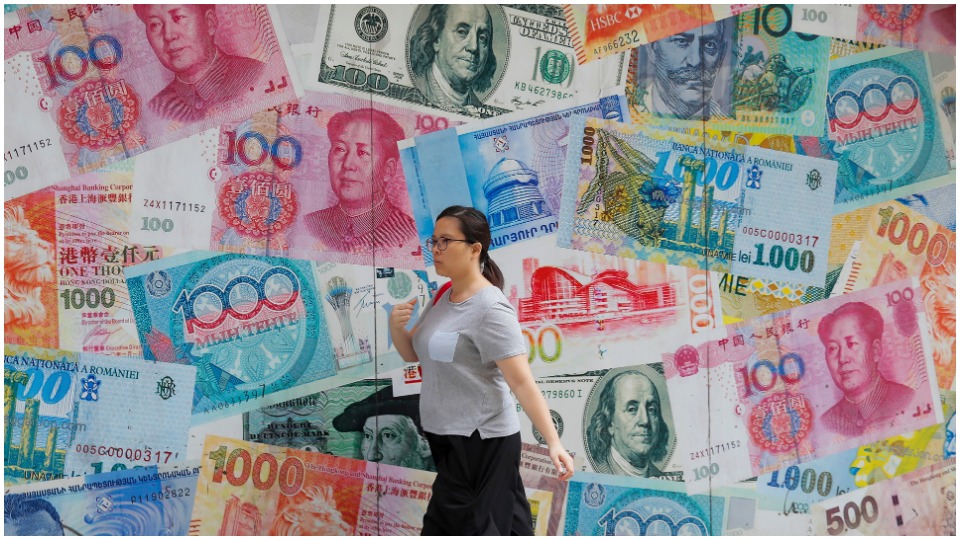
This is part 7 of the full main report, “Unity to save people and planet; For full equality, democracy, peace, and green socialism,” to the 31st National Convention of the Communist Party USA held in Chicago, Illinois, June 21-23, 2019. Other installments available here. The abbreviated oral presentation is available here.
John Bachtell served as CPUSA national chair from 2014 to 2019. Rossana Cambron and Joe Sims were elected as the new CPUSA co-chairs.
Capitalism is a crisis-ridden system. A crisis anywhere in the global capitalist system can become a world contagion. It is only a matter of time before a new one occurs, perhaps even more destructive than the 2007 financial crisis.
Neoliberalism is the current set of economic policies defining globalization. The extreme right originated these policies to undo the New Deal and Great Society gains and reverse the falling rate of profit.
Domestically the result was deregulation, privatization, and austerity. Globally the result was a race to the bottom for the working class and the widening gap between the North and South, between developed capitalist and developing economies. Everywhere it resulted in extreme wealth concentration, industry oligopolies, and attacks on democracy and national sovereignty.
The scientific, technological, and mass communications revolutions have facilitated globalization and the creation of far-flung production chains. Financial and economic crises originating in one place can quickly spread globally.
The mass communications revolution has also elevated the battle of ideas. Cyberwarfare and mass disinformation, including “deep fakes,” are seemingly impossible to stop and can bring down governments, affect politics, and alter election outcomes.
Cyberwarfare is also aimed at a nation’s infrastructure, military installations, and critical industries, geared to disrupt and disable the natural functioning of the economy, government, media, and social media. They present new challenges to democracy and national sovereignty.

The world is a smaller, more complex, and interconnected place.
A new global order on the horizon
After WWII, a new global order with the U.S. as the dominant capitalist power was established. Alliances, institutions, and rules comprise what is called the “liberal international order.” Both the Democratic and Republican Party establishments have generally supported this order.
However, the world is changing rapidly, and the old global order is increasingly battered by crisis and contradiction. Has the current phase of neoliberal globalization exhausted itself? Is a new global balance of forces and new stage emerging, perhaps one that is not capitalist but not yet socialist-oriented?
U.S. imperialism is a descending superpower in today’s world. The ability of the U.S. and other capitalist powers to define globalization and dominate the global order has weakened. Globalization is increasingly shaped by the rise of China, emerging economies, and alternative global institutions and blocs.
Other factors include:
1. The inclusion of China, Russia, the Eastern European, and newly emerging economies in the global capitalist market system. China and Russia are increasingly challenging the current global order.
2. Growing trade between China and emerging economies and between emerging economies themselves, and the creation of new alliances and trade blocs (BRICS).
3. Greater integration and sharpening competition between capitalist powers, and Russia, also a global capitalist power.
4. Growing resistance to U.S. foreign policy in response to the history of regime change, military aggression, and occupation in the Korean peninsula, Vietnam, Iraq, and Afghanistan.
How will U.S. capitalism respond to this new reality, shifts in the world balance of forces, and growing infeasibility of the post-World War II global order? Will U.S. ruling circles adjust or seek to regain a dominant status by military force, as happened in the invasion and occupation of Iraq?
Trump foreign policy
Trump’s foreign policy is shaped first and foremost by Wall Street and U.S. capitalist corporations, primarily the banks, fossil fuel, and military corporations.
Its goal is to restore the unchallenged dominant status of U.S. imperialism. However, the Trump foreign policy has specific new features producing instability, turmoil, chaos, and an elevated war danger.
The policy is shaped by extreme right sections of capital, administration officials rife with contradictions and competing interests, and Trump family members and their circle of cronies who unabashedly seek to expand their business empire.
The State Department and national security apparatus are run by extreme right officials with lineage to Joe McCarthy, Barry Goldwater, and Dick Cheney, including John Bolton and the war criminal Eliot Abrams.
These forces include individuals with links to Tea Party right-wing evangelicalism (Pompeo, Pence) who seek to impose their religious views on policy and economic nationalists like Steve Bannon.
What unites these forces with Trump and economic advisor Peter Navarro is “America First” nationalism. This foreign policy despises global institutions. It favors military might and regime change over diplomacy, nuclear supremacy, the “preventative war doctrine” based on self-defense, and the notion that accommodation is surrender.
It embraces free-market capitalism and the elimination of socialism.
Bolton, Pompeo, and some sections of U.S. capital, in alliance with the right-wing governments in Israel, Saudi Arabia, and the UAE, are obsessed with carrying out regime change in Iran. The provocations toward Iran could quickly spiral out of control, escalating into a regional conflict and possibly nuclear war.
The refusal by Israel to recognize the right of Palestinian people to national self-determination, the occupation of Palestine, and its annexation through an expansion of settlements has created an explosive situation. The right-wing extremist alliance of the Trump administration, Netanyahu government, and the Middle East feudal monarchies have created new dangers of war without end.
Solving this crisis begins with the ouster of both Trump and Netanyahu, the extreme right forces backing them, and the Middle East feudal monarchies. Then a two-state solution, still supported by majorities in Israeli and Palestine, the UN, and the U.S. Jewish community, may be possible.
In the end, it will be up to the Israeli people, both Jews, and Arabs, to change their government and its policies, win equal rights for Israeli Arabs, and end the occupation of Palestinian territories.
U.S. foreign policy and ruling class splits
Finance capital, energy, and military corporations dominate the U.S. foreign policy establishment, spanning both Democratic and Republican Parties. However, “conflicts of interest” and splits in the ruling class play out in the foreign policies promoted by these parties. Unilateralism over multilateralism, military force over diplomacy, and addressing climate change over denying it are some critical policy differences.
Trump’s “America First” demagogy is geared to mobilize his base of supporters. Racism and white supremacy, anti-immigrant hate, Islamophobia, anti-Semitism, anti-communism, and nationalism infuse this demagogy.
Immigration, foreign policy, and militarization intersect at the U.S.-Mexico border. The goal of Trump and the extreme right is to slow down, halt, and reverse changing racial demographics. Trump is trampling on U.S. and international law on migration, refugees, asylum, and religious freedom.
The Trump administration sees China as the chief strategic and competitive rival and is building a global front against China through the military encirclement and the trade war. Although it differs in significant ways, some aspects of Trump’s policy echo Obama’s approach to isolate China by the “Pivot to Asia” and now-defunct Trans-Pacific Partnership (TPP). Undermining China’s socialist orientation, its ability to compete scientifically and technologically, and increasing profits for key US corporations is Trump’s goal.
The U.S. seeks to restore its single dominant power status in the Western hemisphere, through regime change in Venezuela, Cuba, and Nicaragua, the defeat of anti-imperialist center-left governments and reverse increasing economic, diplomatic, and cultural ties and cooperation with Russia and China.
The global fight for peace
But the rest of the world is not going along with Trump. He finds little support for his efforts to foster regime change in Iran and Venezuela, and nearly every country continues to support the Paris Climate Accords.
Building a broad global democratic alliance for peace, sustainable development, and a new democratic global order is the only way to counter U.S. and global imperialism, and especially the extreme right, and fascist circles connected to the Trump administration.
This alliance includes every force possible to isolate the global extreme right, including global public opinion, non-militarized states, socialist-oriented, and independent developing nations and blocs.
Global working-class unity and solidarity of all peace, environmental, and democratic forces are critical.
Unity of communist, socialist, and revolutionary left democratic forces, and currents are also critical.
Employing splits in the U.S. and global ruling circles, isolating the most reactionary sectors and regimes, is crucial.
A people’s foreign policy and 2020 elections
The purpose of the Communist Party USA is to help build broad working-class unity and international solidarity with every democratic and social movement; to challenge U.S. ruling class ideological seepage of great-power chauvinism and other ideological poisons into the U.S. working class.

Moreover, to win support for a new pro-people, demilitarized foreign policy linked to an advanced pro-people, pro-working-class domestic policy.
The CPUSA and other democratic movements need to challenge the embrace of increased military spending and the dominant pro-corporate foreign policy by these forces in the Democratic Party.
Nevertheless, if Trump and the GOP are successfully ousted in 2020 and a broad center-left governing alliance elected in their place, the terrain will be altered. A victory will be possible only through the vehicle of the Democratic Party and those in its orbit. And with the working class and democratic forces and movements independent of the Democratic Party itself working in more or less close alliance. The working class, its allies, and mass democratic movements can then gain leverage to shape a new peaceful foreign policy.
Continued in part 8: Celebrating 100! The Communist Party and the new era of socialism










